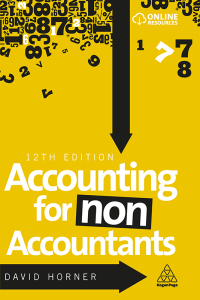Question
The Evolution of the Cost System From 1970 to 1990, the firms cost system had undergone three major changes. Prior to 1976, there was only
The Evolution of the Cost System
From 1970 to 1990, the firms cost system had undergone three major changes. Prior to 1976,
there was only one overhead rate at the Tatsuno plant. The system directly traced some material costs to products, but all other costs were allocated. These allocated costs were divided into two categories: processing and overhead. Processing costs included the indirect material, direct and indirect labor, and direct expenses of the production process. Direct labor was allocated because the direct labor wage rates varied by individual, and it was considered too expensive to assign the cost directly to products. The overhead costs contained the indirect material, indirect labor, and indirect expenses associated with support and administration. The processing overhead costs were combined and divided by the number of direct labor hours to give an average allocation rate. The reported cost of a product was given by the sum of the direct material charge and the direct labor hours that the product consumed multiplied by the allocation rate. Such a simple system was
considered adequate because there were only small differences in the cost structure of the products. In addition, the level of automation was small, as was depreciation. The stated objective of this system was to differentiate material cost from other expenses and provide mechanisms for total cost reduction.
In 1977, the cost system was updated. The overhead costs were split into two categories:
procurement costs and other costs. Procurement costs were those costs associated with obtaining raw material and purchased parts. They included the personnel expenses of the procurement section, transportation charges, car fares, and other miscellaneous expenses. A single allocation rate was determined for processing costs and some of the other costs. A separate rate was determined for procurement costs and the allocated expenses of the administration and production technical sections. The costs of these two sections were allocated to the production and procurement sections based on head count. The procurement costs were allocated to products based on the sum of the direct material charge plus the allocated processing costs. The primary purpose of this system was to draw attention to the procurement costs, which had grown substantially over time. This increase was due both to an increase in production capacity, which was accompanied by a corresponding increase in the volume of procured parts, and by an increase in the ratio of procured to internally manufactured parts. The other important change in the system was its focus on the cost of quality. The cost of defects was isolated from the standard costs to give it more visibility. Separate variances were computed for standard production and defects.
In 1983, the cost system was again updated. The general structure was maintained, but now
multiple allocation rates were computed for processing costs. The production process was split into 10 different cost centers and different overhead rates were computed for each center. Examples of the cost centers included camera final assembly, electronic flexible board assembly, lens processing, and lens assembly. In addition, the firm had begun to enter into OEM contracts with other firms that would produce components for Olympus. The support and administration costs for the OEM production were significantly different from Tatsuno production. To capture this difference, the two overhead cost allocation rates were computed, one for general suppliers and the other for OEM suppliers. These two rates replaced the single procurement rate computed in the prior system. The treatment of other costs as partially related to processing and partially related to procurement was suspended, and all other costs were allocated as part of the support and administration costs. The primary purpose of this system was to provide improved control over production and support and administration costs.
Required:
- Evaluate how the company's target costing system functions. What changes would you make to the company's current target costing system and strategy?
Please provide a detailed and in-depth analysis.
Step by Step Solution
There are 3 Steps involved in it
Step: 1

Get Instant Access to Expert-Tailored Solutions
See step-by-step solutions with expert insights and AI powered tools for academic success
Step: 2

Step: 3

Ace Your Homework with AI
Get the answers you need in no time with our AI-driven, step-by-step assistance
Get Started


